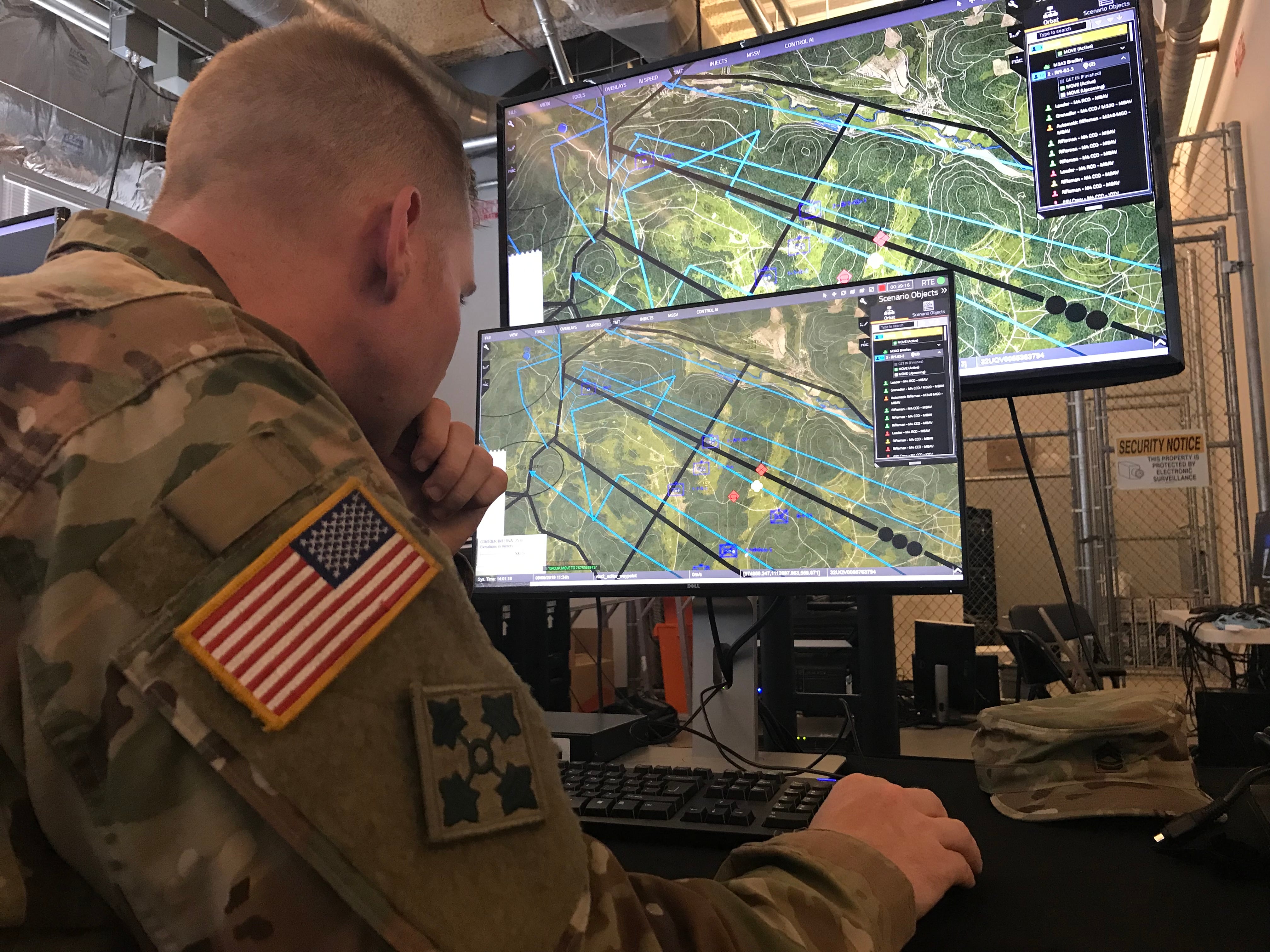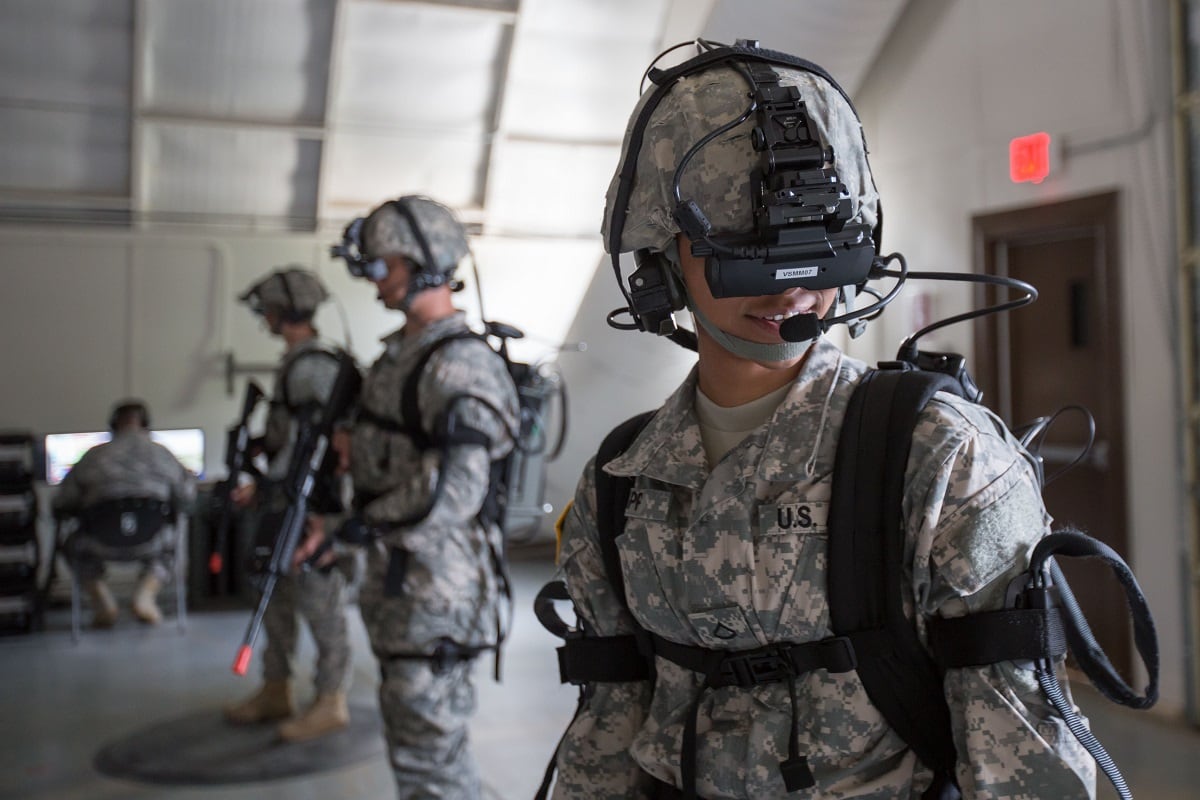WASHINGTON — The Army has awarded several key contracts to build virtual trainers, which make up a critical part of the service’s developing Synthetic Training Environment (STE).
Cole Engineering Services, Inc. (CESI) was selected from a pool of vendors with solutions for ground and air virtual trainers on June 28 to build a prototype of the Army’s Synthetic Training Environment’s Reconfigurable Virtual Collective Trainer (RVCT).
RELATED

The Army sifted through a total of 11 responses to a request for solutions issued in April — eight RVCT solutions that address aircraft, two that address ground platforms and one that covered both air and ground capability in a comprehensive solution.
“As a result of a multi-stage competition, the comprehensive solution, provided by Cole Engineering Services Inc., was selected as the winning vendor providing best value to the government,” a June 28 statement sent to Defense News from Army Contracting Command- Orlando said.
The total value of the prototype project, if all phases and options are exercised, is $81.4 million.
The Army also awarded a $95 million contract June 19 to VT MAK, a subsidiary of Singapore company ST Engineering in the United States, to deliver both Training Simulation Software (TSS) and a Training Management Tool (TMT) — two essential elements that, when combined with One World Terrain, form the STE’s Common Synthetic Environment (CSE).
The CSE enables the RVCT, the Soldier Squad Virtual Trainer and the Integrated Visual Augmentation System (IVAS).
The awards mark big progress in developing the STE — essentially a virtual world in which to train soldiers for war and aims to move the service away from its stove-piped training systems from the ‘80s and ‘90s.
The new system will allow soldiers to train collectively — which is critical to preparing for multidomain operations across air, ground, sea, cyber and space — with greater fidelity. The STE will ultimately also be used as a mission planning tool.
The idea is to be able to click on any place on a virtual globe and go there. Soldiers can then train virtually in an exact environment in which they can expect to operate in reality.
The STE was prioritized through the establishment of Army Futures Command and has its own cross-functional team led by Maj. Gen. Maria Gervais to push efforts forward quickly.
Prior to the standing up of the new four-star command aimed at rapidly building and procuring more modern equipment, the STE wasn’t going to be ready until 2030.
Now that timeline has been shrunk through new approaches in development and acquisition. The contracts awarded this month, for example, are Prototype Other Transaction Agreements under the Training and Readiness Accelerator (TReX), which allowed the service to move more quickly through a competitive process.
RELATED

The plan moving forward for the RVCT is “upon successful completion of this prototype effort,” the Army would award a follow-on production contract “without the use of competitive procedures,” according to the ACC-Orlando-issued statement.
But if the vendor fails to “demonstrate progress” or “be unsuccessful in the accomplishment of the goals of this prototyping effort,” the Army “reserves the right to return to the results of this competition and award additional Other Transaction Agreements to one or more of the vendors that responded to the initial Request for Solutions, as appropriate within the scope and evaluated results of the competition,” the statement notes.
Should the vendor move forward, a follow-on effort could include continued development, further scaling of the solution and integration of future capabilities.
The Army estimates the fielding quantity for the prototype would be 210 (or greater) RVCT-Air trainers and 656 ground versions “at various locations for Full Operational Capability,” according to the statement.
Jen Judson is an award-winning journalist covering land warfare for Defense News. She has also worked for Politico and Inside Defense. She holds a Master of Science degree in journalism from Boston University and a Bachelor of Arts degree from Kenyon College.







